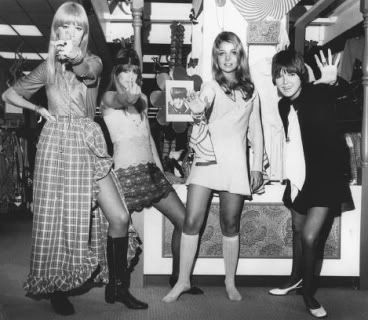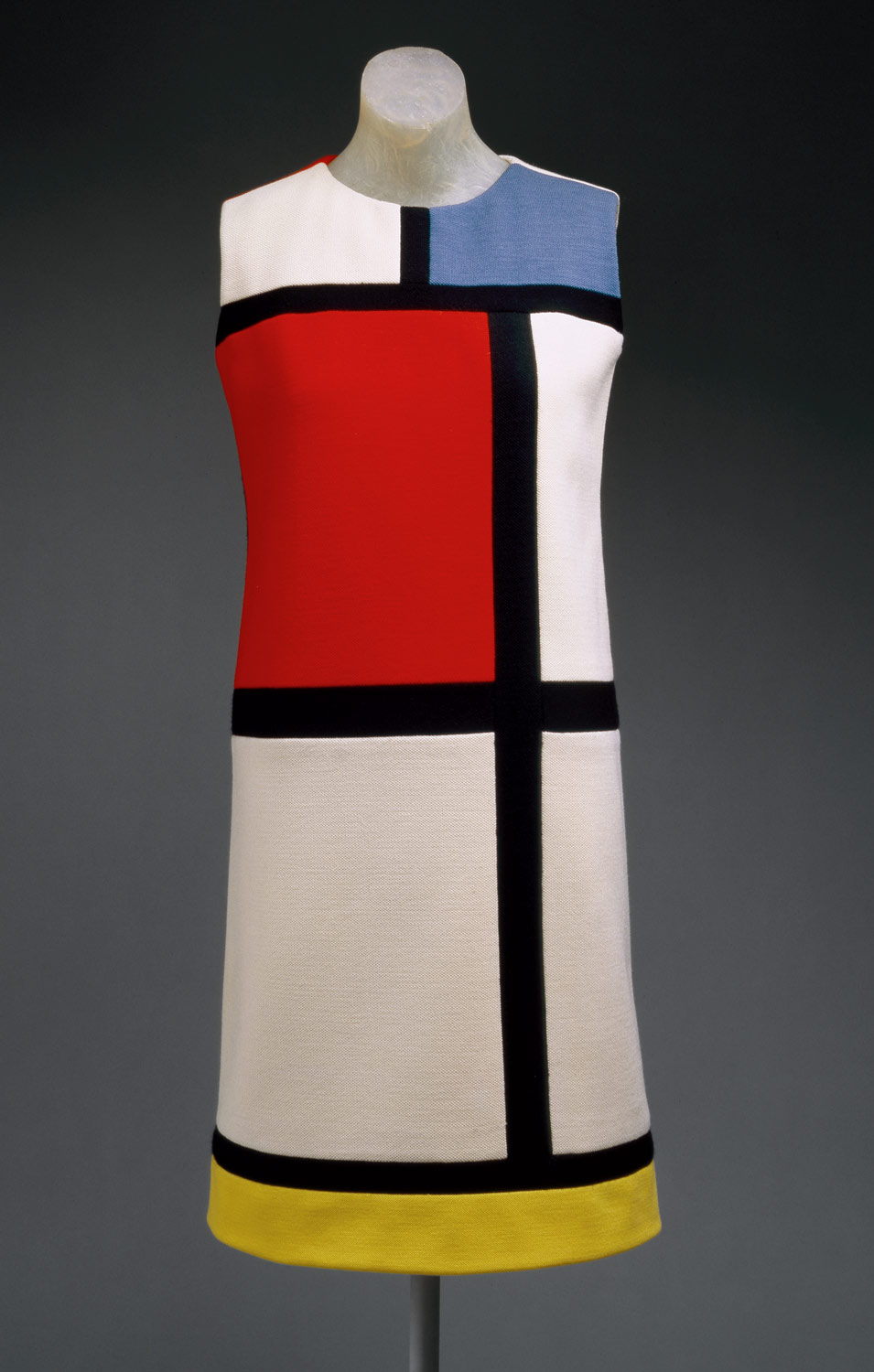Youth predominated the culture of the 1960’s. The post World War II Baby Boom had created 70 million teenagers for the sixties, and these youth swayed the fashion, the fads and the politics of the decade. California surfers took to skateboards as a way to stay fit out of season, and by 1963, the fad had spread across the country. Barbie dolls, introduced by Mattel in 1959, became a huge success in the sixties, so much so that rival toy manufacturer Hasbro came up with G.I. Joe, 12 inches tall and the first action figure for boys.
In fashion, the 1960’s began with crew cuts on men and bouffant hairstyles on women. Men’s casual shirts were often plaid and buttoned down the front, while knee-length dresses were required wear for women in most public places. By mid-decade though, miniskirts or hot pants, often worn with go-go boots, were revealing legs and women’s hair was either very short or long and lanky. Men’s hair became longer and wider along with beards and moustaches. Menswear too had a much needed renaissance; bright colors, double-breasted sports jackets, polyester pants suits with Nehru jackets, and turtlenecks were in vogue.



By 1964 the teenage influence caused the hemlines to creep up, and most teenagers were wearing mid-thigh length shifts as daywear. The sweater-dress was also very popular with young girls from 1961 onwards, until the mid-60s when other innovative designs were introduced. 1965 saw the premiere of culotte dresses in op-art or vibrant coloured patters (think Peter Max or Pucci) and these were most popular as evening or party wear; culottes had the freedom of trousers but the look of a full skirt. 1966’s dress was the tent, or “baby doll dress”, sometimes in transparent chiffon, worn over a contrasting slip, and often sewn-in.

1966 was the year of the mini-skirt! Widely acknowledged as the brainchild of designer Mary Quant, within a year anybody who had the body to pull it off was wearing a mini, many of whose hemlines were 4-5 inches above the knee in New York and 7-8 inches above the knee in London! Throughout this time skirts were often paired with a matching sweater and matching set of tights for a uniform look. 1965 and 66 also saw the mini-coat, perfectly straight and virtually shapeless; also the pop-inspired dyed furs and PVC designs. By 1967 capes were popular, and were often made with matching deerstalker hats.

In ladies’ tops or blouses, from 1960 onwards the turtleneck, or polo neck, sweater was common, especially under a collarless jacket, and in 1966 Aran sweaters, with their thick knit, became trendy. Sleeve length was usually ¾ length, with long sleeves often pushed partway up the arms for a ¾ look (think Jackie O style suits and jackets). Sleeveless tops did not become popular until the mid 1960s.
By the end of the decade, men’s ties, when worn, were up to 5″ wide; most were patterned even when worn with stripes. Women wore peasant skirts or granny dresses and chunky shoes. Unisex dressing was very popular, featuring the bell bottomed jeans, love beads, and embellished t-shirts. Clothing was as likely to be purchased at surplus stores as boutiques. Blacks of both genders wore their hair in an afro; whites of both genders wore their hair either big and frizzy or long and straight.



More 1960’s info
1960’s Icons
Jackie Kennedy
Costume ideas:


Mod

Hippy

Teddy Boys


Beatnick



Men in the 1960s:
Men’s suits finally became more fitting. Tailored jackets and narrow lapels worn with narrow collared shirts and skinny ties became popular thanks to Italian designers’ influence. Men’s fashion palettes expanded, which was not surprising, considering that clothing choices for men during the 1950s could hardly have become more conservative. The result is sleek and modern suits that we can see on tv series Mad Men. Popular shoes for men at the time were winkle pickers, an exaggerated pointy toe shoe.




